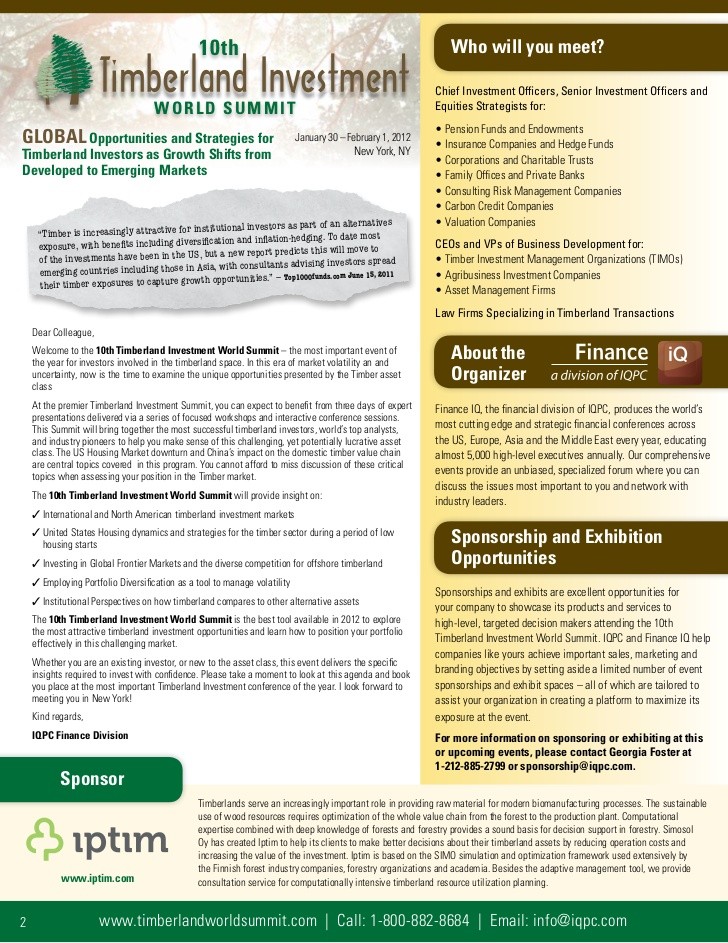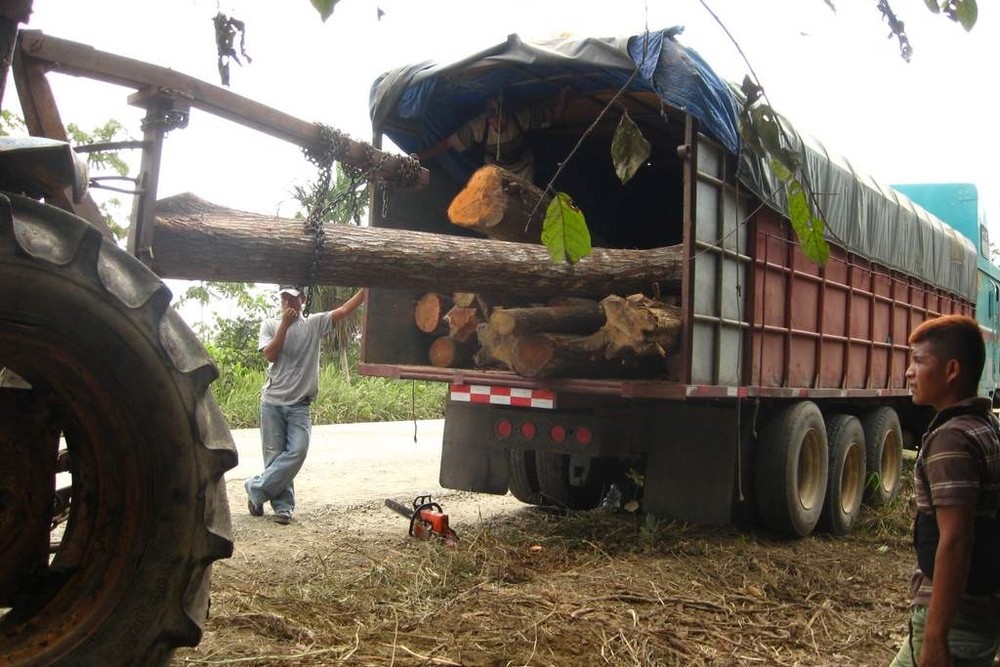Timber Investment Investment U
Post on: 1 Октябрь, 2015 No Comment

By Dr. Steve Sjuggerud,
Advisory Panelist, Investment U
Greetings from snowy Washington State. Weather permitting, I’ll be driving around the Olympic peninsula with a forestry consultant today, looking at more potential timber investments.
Trees? Timber as an investment? You’ve probably never considered timberland in your investing strategy. But you ought to.
Investing in timberland stacks up very well versus stocks. Today I’ll share some of the reasons why you might consider adding a timber investment or two to your portfolio. I’ll then share with you easy methods of investing in timberland. It’s simple — you buy two stocks on the NYSE!
Why Timber as an Investment?
I’ll make it quick:
The Demand for Timber Isn’t Going Away
The head of the timber company I met with yesterday told me that every American consumes a 100-foot tree. every year. He pointed out that I was taking notes on paper (from a tree), sitting at a conference table made of wood, in a wooden chair, in a room with wood trim all around, in a one-story office that was likely framed with, well, wood.
Are there alternative materials other than wood that could have been used? Sure. But the use of wood doesn’t appear to be shrinking. Don’t be alarmed by this if you’re considering timber for your next investment play. thinking that timber companies are cutting down forests with abandon.
Forest science is highly advanced. I stood among 36-year-old Douglas fir trees yesterday that will likely be cut in the next few years. When cut, they’ll be in excess of 100 feet tall. And yet, this will be the fourth time this stand (as they call it) has been harvested.
Instead of chopping down a forest and moving on, it is in the best interest of timberland companies to think in the very long term, and harvest in a sustainable way. In essence, out here in Washington, they’ll cut and replant roughly 1/40th of their forest every year.
Some folks who don’t understand how the world works want to shut down timber operations in the U.S. I’ve personally seen timber operations in emerging market countries. And trust me, you’d rather have your wood products coming from regulated, publicly traded U.S. timber companies that are accountable and practice sustainable growth than the alternative: secretive, unscrupulous operators slashing down rainforests in a way that those rainforests will be gone forever.

Thinking of Making a Timber Investment? Here Are the Two Easiest Ways to Invest
The timberland consultant I’m out here with worked for Rayonier (RYN) for years, and has been a consultant for Plum Creek Timber (PCL), as well. Rayonier and Plum Creek Timber are, by far, the largest direct timber investment plays you can buy.
They know timber, and they are shrewd managers of their land. Plum Creek is larger and more diversified, but Rayonier is still an excellent timber investment play, with over 2 million acres of quality lands. I like both of them so much, I have both of them as buys on my newsletter’s fairly short recommended list.
They both traditionally pay dividends in the 4% range. And they’re both relatively cheap, with timber assets valued at only $800 to $1,500 per acre (depending on how you crunch your numbers). There are many hidden gems in their properties that are worth many times that — I know because I’ve stood on them.
Investing in timberland is something you probably haven’t considered in your portfolio. But you should: timber as an investment has beaten stocks, with less volatility. It’s uncorrelated to the stock market. You get paid high dividends. And you own millions of acres of exceptional real estate in the U.S. for around $1,000 an acre. Sounds good to me.
Good investing,
Steve
Today’s Investment U Cribsheet
www.htrg.com ) and click on Research then read some of the back issues there.














